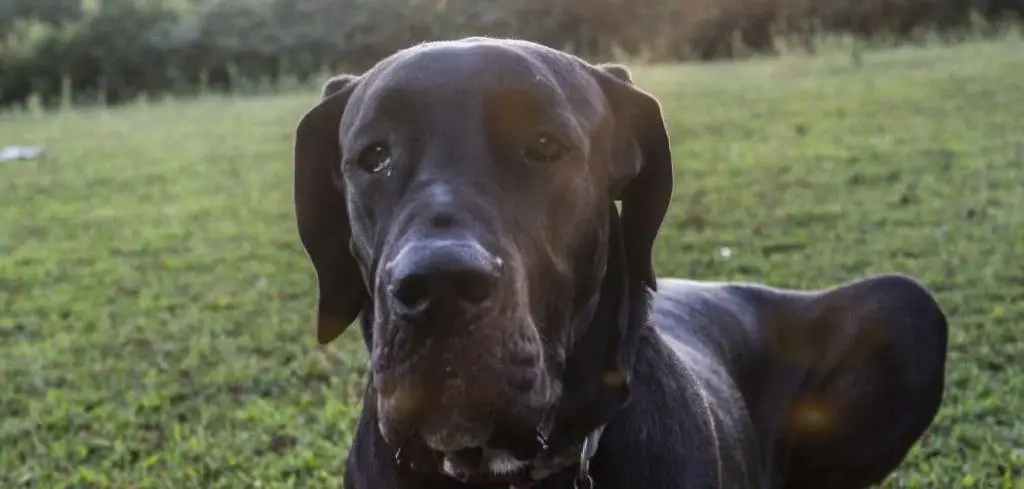Seeing your dog panting and shaking after vomiting can be frightening.
These symptoms can signal anything from mild digestive upset to a serious, life-threatening condition that requires urgent veterinary care.
We outline the common reasons why dog panting and shaking after vomiting may happen, what you can do at home, and when to seek veterinary help.
Dog Panting and Shaking After Vomiting — Why It Happens
Panting and shaking after vomiting in dogs can be the result of stress on the body, pain, or an underlying illness. Common triggers include gastrointestinal distress, toxin ingestion, infections, metabolic imbalances, or organ problems.
In some cases, the physical strain of vomiting alone can cause temporary panting and trembling, but when these symptoms persist or worsen, it’s often a sign of something more serious.

Dog Panting and Shaking After Vomiting: Common Causes
Gastroenteritis
Gastroenteritis, or inflammation of the stomach and intestines, often causes vomiting, diarrhea, and abdominal pain.
After vomiting, your dog may pant from discomfort and shake due to dehydration or fever.
It can develop from dietary indiscretion, infections, or sudden diet changes, and while mild cases can resolve with supportive care, severe cases need prompt veterinary treatment.
Read more: Dog Panting and Shaking After Vaccine (Here’s why)
Pancreatitis
Pancreatitis is inflammation of the pancreas, often triggered by fatty meals or underlying health issues.
Vomiting is common, and the intense abdominal pain can make dogs pant and tremble afterward.
This condition can escalate quickly, leading to dehydration, lethargy, and even organ damage without urgent care.
Toxin Ingestion
Dogs who ingest toxic substances such as chocolate, xylitol, grapes, or certain plants often vomit soon after.
The body’s reaction to toxins can cause panting from distress and shaking due to systemic effects on the nervous system.
These situations are emergencies, as toxins can rapidly cause seizures, organ failure, or death.
Heatstroke
If a dog has been in a hot environment, vomiting followed by panting and shaking may be linked to heatstroke.
Overheating affects multiple body systems, leading to organ strain, dehydration, and in severe cases, collapse.
Heatstroke progresses fast and requires immediate cooling measures and emergency vet care.
Kidney or Liver Disease
Chronic or acute kidney and liver problems can cause nausea and vomiting.
Toxins build up in the body when these organs are compromised, leading to panting, tremors, and weakness.
These diseases often need ongoing medical management and supportive therapy.
Pain or Shock
Any severe pain or sudden drop in blood pressure can cause shaking and panting after vomiting.
This can happen with injuries, internal bleeding, or severe illness.
Shock is life-threatening and demands immediate veterinary attention.
What to Do If Your Dog Is Panting and Shaking After Vomiting
First, assess your dog’s overall condition. If the vomiting was mild and your dog seems otherwise alert, you can withhold food for 6–12 hours (water should remain available) and then offer a bland diet.
Keep your dog in a cool, quiet environment to reduce stress and overheating. Monitor breathing, gum color, and activity level closely.
Encourage small sips of water or ice chips to prevent dehydration, but avoid letting your dog drink large amounts at once.
If you suspect toxin ingestion, heatstroke, or see worsening symptoms, skip home treatment and head to the vet immediately.
When to Call or Visit Your Vet
Seek immediate veterinary care if your dog vomits repeatedly, is unable to keep water down, or shows signs of lethargy, collapse, or confusion.
Pale, blue, or bright red gums, a bloated abdomen, or difficulty breathing are all emergencies.
Panting and shaking that persists beyond a short recovery period after vomiting should never be ignored, as they often indicate a serious underlying issue.
Read more: Dog panting excessively (Should you worry?)
Key Takeaway
Panting and shaking after vomiting can be a temporary reaction to the physical stress of being sick, but it can also be a red flag for a dangerous health problem.
Watch your dog closely, provide supportive care when appropriate, and act quickly if symptoms worsen or other warning signs appear.
When in doubt, contacting your veterinarian is the safest choice to ensure your dog gets the right treatment in time.
